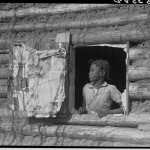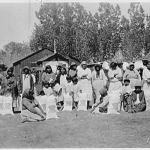The community of Canton had always been loyal to the Canton Asylum for Insane Indians. They bragged about it to anyone who would listen and disparaged any criticism of it, pointing to the wonderful write-ups local reporters and other visitors routinely gave when they toured the facility. Citizens wanted their town to grow in both size and prestige, and always hoped that the unique institution in their midst would contribute to that goal. The asylum also meant steady jobs for a number of townspeople, and a market for the town’s goods and services.
During the 1933 battle to shut the asylum down (see last post), however, even more was at stake. The entire country was suffering as the Great Depression worsened, and the asylum now presented an economic lifeline that couldn’t be replaced. Throughout the country, bank failures had wiped out personal savings for many families, who often found themselves homeless afterward. In 1933, a quarter of U.S. workers who sought jobs were unemployed, while hunger and poverty were rampant. A report from December, 1932 shows that (including superintendent Dr. Harry Hummer) nineteen people were on staff at the Canton Asylum for Insane Indians, and undoubtedly others worked there on small contract projects. When every job was so important, the people of Canton were not about to let the asylum close without a fight.
______________________________________________________________________________________


